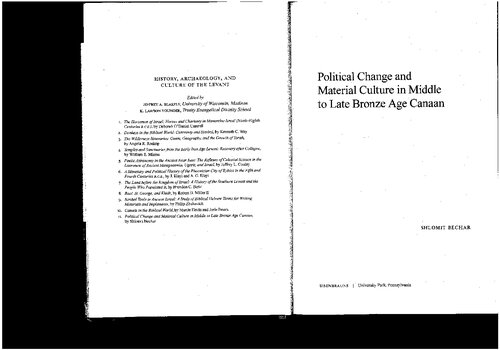

Most ebook files are in PDF format, so you can easily read them using various software such as Foxit Reader or directly on the Google Chrome browser.
Some ebook files are released by publishers in other formats such as .awz, .mobi, .epub, .fb2, etc. You may need to install specific software to read these formats on mobile/PC, such as Calibre.
Please read the tutorial at this link: https://ebookbell.com/faq
We offer FREE conversion to the popular formats you request; however, this may take some time. Therefore, right after payment, please email us, and we will try to provide the service as quickly as possible.
For some exceptional file formats or broken links (if any), please refrain from opening any disputes. Instead, email us first, and we will try to assist within a maximum of 6 hours.
EbookBell Team

5.0
78 reviewsCombining archaeological and historical analysis, Bechar identifies the most significant changes evident in architectural and ceramic remains from this period and then explores how and why contemporary political shifts may have influenced, or been influenced by, these developments. Bechar persuasively argues that the Egyptian conquest of the southern Levant―enabled by local economic decline following the expulsion of the Hyksos and the fall of northern Syrian cities―was the impetus for these changes in ceramics and architecture. Using a macro-typological approach to examine the ceramic assemblages, she also discusses the impact of the influx of Aegean imports, suggesting that while “attached specialists” were primarily responsible for ceramic production in the Middle Bronze Age, Late Bronze Age ceramics were increasingly made by “independent specialists,” another important result of the new administrative system created following Thutmose III’s campaign.
An important contribution to our understanding of the transition between the Middle and Late Bronze Ages, this original and insightful book will appeal to specialists in the Bronze Age Levant, especially those interested in using ceramic assemblages to examine social and political change.